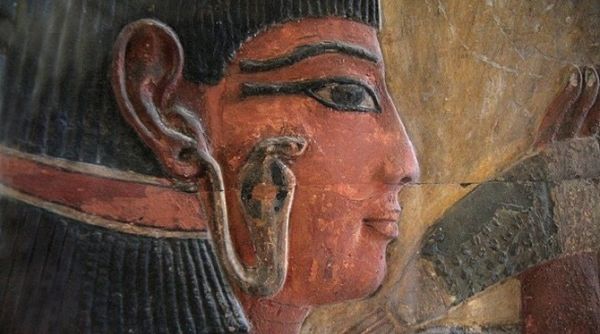Beauty and Cosmetics in Ancient Egypt
The captivating allure of ancient Egypt goes beyond its grand pyramids and enigmatic hieroglyphs – it extends to the realm of beauty and cosmetics. The Egyptians, renowned for their cultural advancements and mystique, had a profound relationship with makeup that stretched back millennia. From kohl eyeliner that adorned both women and men to elaborate face makeup rituals, the world of ancient Egyptian cosmetics is a fascinating journey into the past that unveils their beauty ideals, social practices, and artistic expressions.
Traditional Ancient Egyptian Makeup: An Artistic Expression of Beauty and Culture
In the heart of the ancient Egyptian civilization, makeup held a significant place in daily life and was intertwined with their spiritual beliefs, social status, and cultural practices. The ancient Egyptians believed that adorning oneself with makeup not only enhanced physical appearance but also invoked protection from the gods and warded off evil spirits. Thus, makeup was much more than a mere cosmetic; it was a spiritual and cultural symbol that transcended the boundaries of vanity.
History of Egyptian Makeup: From Natural Pigments to Exquisite Artistry
The history of Egyptian makeup dates back to around 3100 B.C., where the use of cosmetics was well-documented in paintings, texts, and archaeological findings. Initially, makeup was derived from natural elements such as minerals, plant extracts, and even insects. Ancient Egyptians ground minerals like malachite and galena to create vibrant pigments for their cosmetics. As their society progressed, the art of makeup evolved, leading to the development of a wide range of cosmetic products that catered to various preferences and social standings.
Ancient Egyptian Makeup Ingredients: Secrets of Radiance and Elegance
The composition of ancient Egyptian makeup was a reflection of the region's rich natural resources and ingenuity. Various ingredients were employed to create makeup products that adorned the skin with vibrant colors and textures. Minerals like ochre, chalk, and hematite were mixed with oils to produce face paints. Green eye shadows were crafted from crushed malachite, while black kohl eyeliner was derived from galena. Additionally, pigments from plants like henna and safflower were used for lip and cheek staining.
Ancient Egyptian Face Makeup: Rituals of Elegance and Symbolism
The application of face makeup was a meticulous process in ancient Egypt, where each step held cultural and symbolic significance. Women and men both indulged in these beauty rituals. Foundation was often created using white lead or chalk to achieve a fair complexion, which was considered a mark of aristocracy. Rouge, crafted from ochre, was applied to the cheeks and lips to create a healthy flush. The eyes, however, were the focal point of these rituals, with eyelids adorned in vibrant colors to ward off the evil eye and enhance personal beauty.

Kohl Eyeliner in Ancient Egypt: An Iconic Symbol of Protection and Aesthetics
One of the most iconic elements of ancient Egyptian makeup was kohl eyeliner. Both men and women lined their eyes with kohl, not just for aesthetic purposes, but also as a protective measure. Kohl, typically made from the mineral galena, was believed to guard against eye infections and the harsh desert sun's glare. This practice also had a spiritual dimension, as the ancient Egyptians considered the eyes to be a window to the soul, and adorning them with kohl held spiritual significance.
Egyptian Pharaohs Makeup: The Regal Splendor of Divine Rulers
The pharaohs of ancient Egypt, seen as divine rulers, took their appearance seriously and used makeup to assert their divine connection. Pharaohs adorned themselves with elaborate makeup, often featuring vibrant eye shadows and bold kohl eyeliner. This regal makeup not only showcased their exalted status but also aligned them with the gods. It was a powerful tool for asserting their authority and immortality.
Male Egyptian Makeup: Breaking Gender Norms in Beauty
In ancient Egypt, the concept of makeup transcended gender boundaries. Men, much like women, engaged in various beauty practices. Men of high social status often applied makeup to accentuate their features, presenting an idealized image of masculinity. Kohl eyeliner, in particular, was widely used by men not only for its aesthetic appeal but also for its perceived protective qualities.
Egyptian Female Makeup: Celebrating Feminine Beauty and Empowerment
Ancient Egyptian women embraced makeup as a means of celebrating their femininity and expressing their social standing. The application of cosmetics was a part of their daily routine, encompassing rituals that showcased their unique beauty ideals. Adorning themselves with face makeup, kohl eyeliner, and intricate jewelry was a symbol of empowerment, self-expression, and connection to their cultural heritage.
The ancient Egyptians' relationship with makeup transcended the realm of aesthetics. It was a spiritual practice, a mark of status, and a form of artistic expression that reflected their deep cultural values. The vibrant pigments, meticulously crafted kohl eyeliner, and intricate face makeup rituals have left an indelible mark on history, reminding us that the pursuit of beauty is a timeless and multifaceted endeavor.
Best Egypt Private Tours 2025
| Tour | Itinerary | Price |
|---|---|---|
| Luxor and Aswan Travels | 4 Days | $ 665 |
| Cairo Holiday Packages | 5 Days | $ 819 |
| Cairo to Petra Tour | 7 Days | $ 975 |
| Cairo and Luxor Holidays | 5 Days | $ 975 |
| Egypt and Dubai Tours | 8 Days | $ 1020 |
| Turkey and Egypt Tours | 8 Days | $ 1060 |
| Egypt Overland Tours | 8 Days | $ 1105 |
| Wheelchair Accessible Nile Cruise | 4-5 Days | $ 1145 |
| Cairo and Istanbul Tours | 12 Days | $ 1510 |
| Pyramids and Nile Cruise Holidays | 8 Days | $ 1510 |
